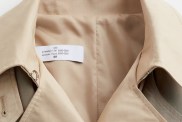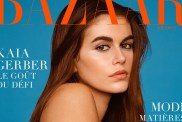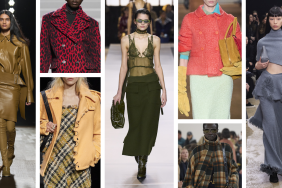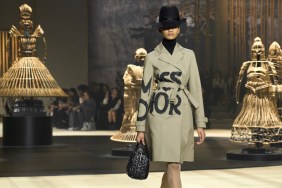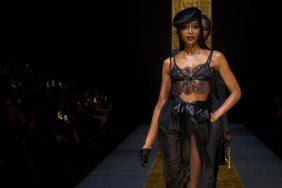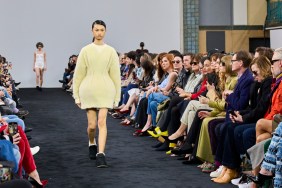Let’s forget about Fall 2015 for two minutes. Imagine it’s Paris in the fall of 1973. Seven hundred of the most esteemed society swans and industry bigwigs from around the world take their seats at the Grand Divertissement à Versailles, a glamorized stunt benefit organized by Eleanor Lambert Berkson, the well-known publicist who started the International Best-Dressed List and founded the CFDA. To raise money for the restoration of Versailles, five Old World French couturiers — Hubert de Givenchy, Pierre Cardin, Emanuel Ungaro, Yves Saint Laurent and Marc Bohan of Christian Dior — are pitted against five relatively unknown American designers — Roy Halston, Oscar de la Renta, Bill Blass, Anne Klein and Stephen Burrows — in the ultimate fashion smackdown.
In one of the biggest upsets in fashion history, the U.S. team triumphed—not with flashy gimmicks or eye-catching stage props. They won with a simple, unstoppable formula: strong ready-to-wear, an explosion of energy and a groundbreaking army of diverse models (10 of the 36 models were black).

Pat Cleveland and Roy Halston in 1972; Image: Getty
“The battle of Versailles,” as it was later coined by former Women’s Wear Daily publisher John Fairchild, served as the beginning of American fashion as we know it today and became the catalyst for diverse runways that lasted nearly a decade. Pat Cleveland was one of the first black models to reach supermodel status. Norma Jean Darden became a household name and later transformed her modeling career into a successful restaurant and catering business. Meanwhile, Bethann Hardison launched a modeling agency, worked as the editor-at-large at Vogue Italia’s digital platform and became an outspoken activist for equality in fashion.
But by the mid-1980s, a shift in the industry took place, and diversity fell to the wayside. What happened? Robin Givhan, fashion critic and author of The Battle of Versailles, explains, “[Designers] wanted entertainment and black models were associated with being able to really express themselves on the runway. Once entertainment was devalued, black models became less in demand.”
So, where does that leave us in 2015 exactly? Let’s take a look at the numbers. When we conducted a thorough deep-dive into the Fall 2015 runway shows from New York*, London, Milan and Paris, we found an inordinate divide between white models and models of color.** Out of 9,538 model bookings in 373 shows, 80% were white — a ratio that closely resembles Spring 2015 (83%).

Unsurprisingly, New York was the most diverse Fashion Week we examined***. 75.6% of models in New York were white; models of color were represented by 24.4%. Compared with last season, white models were down 3.5% and the Latina presence increased 2.9%.
On the other hand, Milan was the least diverse in every category. White models dominated the runways at 84.2%. The second highest group in Italy were black models at a dismal 5.9% followed closely by Asian models at 5.7%, and Latinas made up 1.6%. All in all, models of color were represented 15.8% of the time, which was a 12.1% increase from last season.

As far as the individual designers are concerned, the top three most diverse runways during Fall 2015 are as follows: First place honors goes to London-based designer Ashish Gupta of Ashish, who consistently champions equality on the runway. (He exclusively cast black models for his Spring 2015 show.) His latest lineup included 10 models of color out of 16, or approximately 62.5%. Not far behind in New York was Zac Posen, whose diversity rating came out to 61.9% based on a ratio of 13 models of color out of 21. That’s up from 53% last season. And finally, designers Carol Lim and Humberto Leon of French luxury brand Kenzo squeaked into third place with a diversity score of 46.3% by booking 19 out of 41 models of color.

Ashish Fall 2015; Image: IMaxTree

So, how do we fix the lack of diversity in fashion? It’s not that simple. “Having the solution is a little like saying you have the answer to world peace,” Givhan told us last week. “I think human nature has us gravitate to those who are like us. So until diversity exists at the most fundamental and earliest stages in our lives, I think diversity in our adult, professional lives will be a challenge. Part of the reason I think it remains challenging is because of our fundamental belief in what defines classic beauty, at least the Western version of it. Everything else is a riff on that — subverting it, pulling away from it. But the standard is the blue-eyed blonde. Fashion also has to find a use for personality on the runway. Once individualism is more highly prized, diversity will be, too.”
*Since we were unable to identify all of the models appearing in Kanye West’s Adidas Originals runway, the multicultural show was not included in our report findings.
**Models of color were categorized as those who appear to be nonwhite or of mixed backgrounds. Models included in the Latin category are classified as nonwhite Latins that do not appear to be strongly Afro-Latin.
***This report includes some of the lesser-known shows not included in our NYFW Diversity Report.
Related:
- New York Fashion Week Fall 2015 Wasn’t As Diverse As You Might Think
- Fashion Week Spring 2015 Diversity Report: Still a Lot of Work Left to Do
- Diversity Report: Just How White Were 2014 Ad Campaigns This Year?
- Diversity Report: Fashion Magazine Covers Still Pretty White in 2014
With additional reporting by Elena Drogaytseva.
